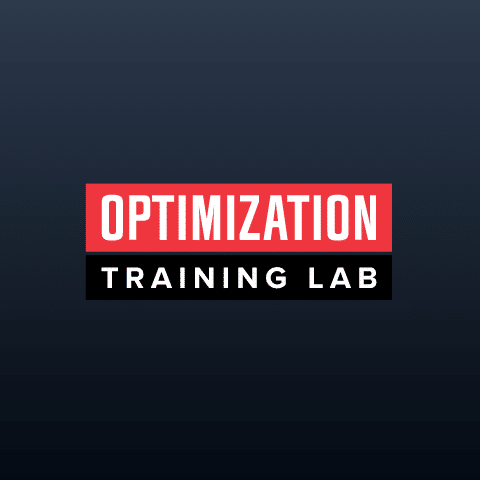Our definition of exercise is that “it is movement, activity or a process which we take part in for the sole purpose to stimulate a specific positive physiological adaptation within the body as safely, effectively, and efficiently as possible.”
The four stimuli we focus on as the stimuli for our particular brand of muscle centric exercise are:
- Mechanical loading
- Micro-trauma
- Metabolic stress
- Motor unit recruitment
Motor unit recruitment is the reason we set the intention to train to momentary muscular failure. Ultimately we are aiming to stimulate as many motor units and muscle fibers as possible. This is especially true of the higher threshold motor units which consist of the fast twitch fibers which contribute the most to muscle hypertrophy and strength gains.
Momentary muscular failure is a term we use quite often, but I believe it is in need of better clarity in regards to its definition. In our training levels (belt levels) we distinguish between what we refer to as volitional fatigue and true muscular failure.
Below is a description of and differentiation between volitional fatigue and true muscular failure that I wrote 30 years ago. Nothing has really changed in how I define it now but I what I understand better is the power of intention. How I describe intention below is actually comparing the value and importance of training intensity to the value of those most important to us. I am very aware that these are not of equal value to most people but it does represent a difference in intention and corresponding intensity of training.
Volitional fatigue
This is a point during an exercise where a person discontinues an exercise either because they feel that they could not complete the repetition or because the exercise became to uncomfortable to continue. This type of failure does not constitute true muscular failure and is based solely on feedback from the person performing the exercise.
True Momentary Muscular Failure
This is the point during exercise when movement becomes more difficult and uncomfortable. Although you are already moving at a slow rate of speed you notice that you are starting to slow down even more. You try to continue the repetition at a 10 second pace, but soon realize that although you are now pushing much harder that the movement arm is till creeping along. You must continue to keep tension on the target muscle at this point because you still have not reached true failure. Continue on until the movement arm or barbell comes to a complete halt. Now comes the big question, ask yourself if your life or the life of someone you love was determined by whether or not you could move the movement arm or barbell a few more inches, could you move int then? If after several seconds of attempting to move the resistance with this thought in mind, no more movement occurs, then you have reached positive failure.
Static Failure
Due to the fact that you are about 20% stronger at holding a weight in the positive position as opposed to moving it past that position you will find that sometimes although you have reached true positive failure that you can still hold the weight in that position. If at this point you ask yourself the same question regarding your life or the life of someone you love.
Henneman’s Law
Henneman’s Law describes the process of going to muscular failure from a scientific perspective. Henneman’s Law (also called the Size Principle) describes the order in which motor units are recruited by the nervous system during muscle contraction.
Key Concept:
Motor units are recruited from small to large based on the force required.
Explanation:
- A motor unit consists of a motor neuron and all the muscle fibers it innervates.
- Henneman’s law states that:
“Smaller motor units (with smaller, slower motor neurons) are recruited first, followed by larger motor units as more force is needed.”
How It Works:
- Low force demand (e.g., lifting a pencil):
- Small, slow-twitch (Type I) motor units are activated.
- These are fatigue-resistant, use aerobic metabolism, and are good for endurance.
- Moderate to high force (e.g., lifting a heavy box):
- As force requirements increase, larger, faster-twitch (Type II) motor units are recruited.
- These units produce greater force but fatigue quickly.
- Maximal effort (e.g., sprinting or heavy lifting):
- The entire motor unit pool is eventually recruited — small to large.
Physiological Significance:
- Promotes energy efficiency by using fatigue-resistant units first.
- Allows graded muscle force output (fine control at low force, explosive power at high force).
- Important for both movement efficiency and neuromuscular adaptation in strength training.
Henneman’s Law is central to understanding why High-Intensity Resistance Exercise —especially with slow, controlled reps to momentary muscular failure—can be so effective, even without heavy weights or explosive movement.
How Henneman’s Law Applies:
Slow, Controlled Reps
- These primarily recruit small, fatigue-resistant (Type I) motor units first.
- As these fatigue, the body progressively recruits larger motor units (Type IIa and IIx) to maintain force.
- Even though the movement is slow, the internal effort increases, which is key.
Training to Failure
- Going to true momentary muscular failure ensures that:
- All motor units, including the largest and most powerful, are eventually recruited.
- This full recruitment is necessary for stimulating maximal hypertrophy and strength adaptations.
Without Needing Maximal Loads
- According to the Size Principle:
- Recruitment is effort-based, not purely load-based.
- As long as the effort approaches maximum (e.g., near failure), motor unit recruitment mirrors heavy lifting.
- This is especially valuable in joint-friendly, low-momentum training styles.
